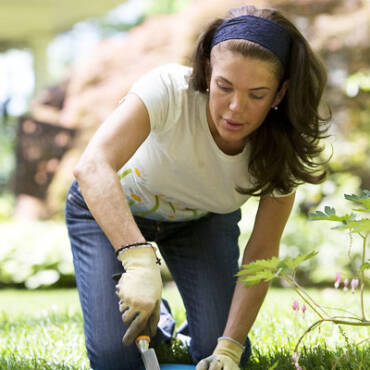It is not only the combines which have been busy on our farms these past weeks. Earlier this month I went out with our local beekeepers at the Bayer Research Farm near Cambridge and helped with a rather stickier summer harvest.

We started off in Marjorie, our old plum orchard, to collect the supers from one of our hives. Unfortunately, the ‘bee blower’ had clattered around slightly too much in the old 4×4 and decided to play dead. So we returned to the traditional method of quickly brushing the bees off the frames before bagging them up. There is a good chance if a bee gets taken away from the hive when the frames are removed for harvest they will not find their way back and so will not survive; therefore it is important to make sure all the bees are removed and are able to stay close to their hive. This can become a bit tricky when there can be 50,000 honeybees in one hive!
We have had bees on the farm for many years – according to the beekeepers, it is one of the most productive sites where they keep their bees – possibly due to a combination of plum and apple blossom in the spring, and the pollen and nectar strips that we have on the farm at other times of the year.
On to a neighboring farm and, with the help of a friendly mechanic, the blower was up and running and we were able to bag the frames up in a much less frantic fashion. The blower quickly blows out any bees in the frames, leaving both bees and honeycomb unharmed. Before we left, a quick dusting of icing sugar was given to the entrance of the hives. This coats the bees, encouraging them to clean themselves, dislodging any parasites they may have, such are the Varroa mite, on the way. We visited a few more local hives before we got down to some sticky spinning business.
Firstly I had a go at removing the wax cap, a lid covering the honey inside the comb. Because the wax which makes up the comb takes so much more time and energy to make, compared to honey, this removal is done with extra care so to not damage the honeycomb structure. That means once the supers are returned to the hives they can be quickly filled again by the honeybees, ensuring plenty of supplies to see the colony through the winter. If given enough space and supers to store the honey, bees are capable of producing 2-3 times more honey than they need to see themselves through the winter, keeping both themselves and the beekeepers happy.
Each frame was then placed inside the spinner and spun to make sure we got almost every dropout. It was then tapped off and filtered before jarring up, ready for breakfast.


Add Comment